Weight Loss Clinic in Claymont, DE
It's alarming to learn that the prevalence of obesity in the US reached 41.9% from 2017 to March 2020, according to the CDC. This means a significant number of individuals, both men, and women, are struggling with their weight on a daily basis. Unfortunately, there's no easy fix for this condition, and the problem is only worsening as more adults and children opt for fast food and convenience over healthy eating, exercise, and positive lifestyle choices.
Aside from the aesthetic challenges of being overweight, such as ill-fitting clothes and unpleasant comments from others, the health consequences are much more serious. Obesity can put your life at risk, and those who depend on you could lose you sooner than expected. As time goes by, the risk of developing severe and life-altering health issues only increases. We're talking about severe issues related to:
- High Blood Pressure
- Heart Disease
- ED
- Stroke
- Respiratory Diseases
- Diabetes
- Sleep Apnea
- More
Thankfully, there is a new medication available that is providing hope for people struggling with obesity in the United States. Weight Loss Clinic in Claymont, DE is a game-changing treatment that approaches obesity as a chronic metabolic disease, rather than a problem that can be solved through willpower alone. The good news is that Kennedy Health is now offering semaglutide and other medical weight-loss peptides to those who qualify and have tried other options with no success.
- Weight Loss Clinic
- Can Help Aid Your Weight Loss
- Weight loss clinic in Claymont, DE
- Who Should Consider Semaglutide for Weight Loss?
- Is Semaglutide Actually Safe to Use?
- What Happens if You Stop Taking Weight loss clinic in Claymont, DE?
- Weight loss clinic in Claymont, DE
- Here's How to Eat Healthy While Using Weight loss clinic in Claymont, DE
- Tips and Tricks to Simplify Healthy Eating
- Weight Begins at Kennedy Health
How Peptides Can Help Aid Your Weight Loss
Many people turn to peptide therapy to improve their overall health by enhancing their hormones. There are many types of peptides that can target specific areas of health, such as collagen peptides that can aid in the improvement of skin, hair, and gut health. Other peptides, including AOD 9604, CJC 1295, 7-Keto DHEA, Phentermine, and Semaglutide, can be incredibly useful for weight loss. Compared to vitamin supplements, peptide therapy operates differently since peptides are already present in the proteins in our bodies, making them easier to absorb and benefit from. Conversely, our bodies sometimes fail to absorb all nutrients from multivitamins, which are eventually excreted through urine.
When it comes to peptides for weight loss, you should remember that losing weight is a complex process that entails numerous factors, such as:
- Genetics
- Age
- Exercise
- Lifestyle
- Diet
While peptides such as semaglutide can provide much-needed assistance in achieving your weight loss goals, they are most effective when combined with healthy dietary choices, regular exercise routines, and overall healthier lifestyle choices. If you have attempted various weight loss plans and diets but have not been successful, medical weight loss with the help of peptides may provide the extra push you need to achieve your goals.

Weight loss clinic in Claymont, DE: An FDA-Approved Aid for Modern Weight Loss
For those seeking to shed pounds and maintain a healthy weight, it can be a challenge to adhere to a consistent diet and exercise regimen. However, busy individuals and parents may find Semaglutide to be a helpful tool in their weight loss journey. This FDA-approved injection, which is used for both diabetes and obesity, works by stimulating GLP-1 receptors in the brain in order to facilitate weight loss and improve overall health in the long term.
You may be curious about the specifics of how this type of peptide functions. Semaglutide mimics glucagon in the body, which signals to the brain that you are satiated and do not need to eat more. When Semaglutide is taken, and you attempt to overindulge, your body sends a signal that says, "That's enough."
Semaglutide also slows down digestion, which reduces unnecessary snacking throughout the day. By reducing glucose spikes after meals, it reduces inflammation, which is crucial for overall health. Additionally, Semaglutide aids in insulin secretion by the pancreas regulates glucose levels in the body, and even has anti-aging and longevity properties. If you are struggling to lose weight, peptide therapies for weight loss, such as Semaglutide can be a beneficial addition to your weight loss plan from Kennedy Health.
To wrap up, weight loss clinic in Claymont, DE can help you lose weight and keep it off by:


Slowing down how much your stomach empties after mealtime helping you feel full longer.

Lowering the blood glucose levels in your body without causing them to fall too low.

Helps to quell your appetite and resist food cravings - the average patient eats around 30% less than usual.

Who Should Consider Semaglutide for Weight Loss?
There are various medications that can be used to suppress appetite and promote weight loss for those struggling with obesity. However, semaglutide is a particularly promising option.
A recent study involving 2,000 obese adults investigated the impact of semaglutide when combined with a diet and exercise regime. The findings were compared with those who only made lifestyle changes without taking semaglutide. After 68 weeks, it was discovered that half of the participants who used semaglutide achieved a weight loss of 15% of their body weight, with almost a third losing 20%. On the other hand, those who solely adopted lifestyle changes lost an average of 2.4% of their weight.
Clearly, semaglutide is a reliable and effective supplement to aid your weight loss journey with Kennedy Health. However, who is the ideal candidate for this medication?
If you are an adult struggling with obesity, excessive weight, or weight-related medical conditions like high cholesterol or high blood pressure, semaglutide injections may be a suitable medication for you. To be eligible for weight loss services from Kennedy Health, like semaglutide injections, you must meet the BMI range criteria set by the FDA. If you are unsure about whether semaglutide injections are the right choice for you, we recommend scheduling a consultation with one of our weight loss practitioners today.
Is Semaglutide Actually Safe to Use?
At Kennedy Health, one of the most common questions our doctors and practitioners hear from patients is whether it's safe to take or not. It's understandable to be cautious about any medication that affects your body. However, to put it simply, this weight-loss medication is safe for you to take as long as you meet the criteria.
Semaglutide is even safe for patients with endocrine, kidney, heart, and liver conditions. As of June 4, 2021, the Food & Drug Administration has approved semaglutide injections (2.4mg once weekly) for chronic weight management in adults with obesity and at least one weight-related condition. Some conditions that may qualify you for semaglutide treatments include:
- Type 2 Diabetes
- Obesity
- High Cholesterol
- High Blood Pressure


What Happens if You Stop Taking Weight loss clinic in Claymont, DE?
Weight loss medications, like semaglutide, may lead to the regaining of lost weight once the treatment is discontinued. In a clinical trial published in Practice Update, it was found that participants had regained 11.6% of the body weight they had lost during treatment after a year of stopping semaglutide medication and lifestyle intervention.
The researchers believe that this weight rebound may be due to the reversal of the cardiovascular benefits of semaglutide treatment, such as regular blood sugar levels and blood pressure. This highlights the need for maintenance medication and ongoing treatment for obesity as a chronic health condition to safely overcome its effects on quality of life and heart health.
The bottom line is that since semaglutide is a hormone-based treatment, it's best to take it on a regular basis over a period of time for the best results. That length of time will vary from patient to patient and depends on factors such as:
- The Weight You're Starting At
- Your Long-Term Goals for Weight Loss
- How Your Body Responds to Semaglutide Injections
3 Ways to Boost the Effects of Weight loss clinic in Claymont, DE
If you've been struggling with your weight for a long time, chances are you're ready to shed that weight as soon as possible. While semaglutide can certainly help, there are a few different ways to extend the effects of semaglutide therapy.
Curious whether you qualify for adding additional peptides to your personalized weight loss plan? Contact Kennedy Health today to speak with one of our specialists. It would be our pleasure to hear more about your goals and give you more info on the powerful benefits of peptide therapy for weight loss.

Stick to a Healthy Diet
For successful weight loss, it is important to adhere to a diet that restricts calorie intake by avoiding foods high in fats and carbohydrates, while still providing the body with necessary nutrients and protein. When crafting your diet, try to eat healthy foods and drinks such as:
- Lots and Lots of Water
- Vegetables
- Fruits
- Lean Proteins
- Low Carbohydrate Foods
When you call Kennedy Health to learn more about weight loss clinic in Claymont, DE, be sure to enquire about healthy eating and weight loss plans tailored to your body and goals.

Exercise Often
To lose weight, it is essential to consume just the right number of calories that the body needs and not exceed it. Once this is achieved, physical activity such as cardio and strength training can help to burn excess fat and strengthen muscles.
If you're struggling to get into an exercise routine to help you lose weight faster, start small and work your way up. Instead of sprinting down your street, go for a 45-minute casual walk around your neighborhood. With time, you can increase the amount of time you're walking and the briskness with which you walk. Eventually, you can work your way up to jogging and other more rigorous exercises, so long as they're suitable for your body.

Ask About Other Peptides from Kennedy Health
Kennedy Health sets itself apart from other weight loss and wellness clinics by offering a wide range of innovative supplements and medicines, as opposed to the typical one-size-fits-all weight loss plans. If you're accustomed to fad diets and fast semaglutide, you may be unfamiliar with peptides that can supplement semaglutide treatment. Some of those may include:
- AOD 9604
- CJC 1295
- Ipamorelin
- MIC Injections
- 7-Keto DHEA
- Phentermine
Here's How to Eat Healthy While Using Weight loss clinic in Claymont, DE
At Kennedy Health, our medical weight loss experts understand that sustainable weight loss isn't solely dependent on medication. Rather, it requires a combination of healthy eating habits, exercise, and lifestyle choices. For those seeking to enhance their weight loss journey, peptides like semaglutide can be beneficial. However, individuals often struggle with adhering to a healthy diet. If you're planning to undergo semaglutide treatment, remember these tips.

Be Mindful While You Eat

To practice mindful eating, you need to be fully attentive and engaged while having meals. This means savoring the taste of your food, being conscious of your body's hunger and satiety cues, and steering clear of any distractions like gadgets or TV. By taking your time to eat, your body will feel fuller, and you won't feel big, bloated, or uncomfortable.
Try Eating More Whole Foods

One way to improve your eating habits is by focusing on incorporating whole foods into your diet. As mentioned above, this includes foods like fruits, vegetables, whole grains, lean protein, and healthy fats. These types of foods are packed with important nutrients that can help you feel full and satisfied, while also supporting your overall health and well-being.
Stay Hydrated Throughout the Day

Staying healthy and losing weight requires drinking ample amounts of water. Experts suggest drinking 8-10 cups of water each day. To add some variety, consider incorporating low-calorie beverages such as herbal tea or infused water.
Try Meal Prep Planning

To maintain a healthy diet, it's a good idea to plan your meals ahead of time. Take some time each week to plan out what you'll be eating and snacking on, making sure to include a mix of protein, complex carbohydrates, and healthy fats. This will help you avoid making impulsive food choices and ensure that you always have nutritious options available when you're feeling hungry.
Tips and Tricks to Simplify Healthy Eating
If you're considering weight loss clinic in Claymont, DE, you should also be thinking about cleaning up your diet to get the best weight loss results possible. There are numerous ways to modify your diet, but not every method will be effective for you, as everyone's needs and reactions to different food groups vary. The key to achieving positive changes in your diet is experimentation. Determine what works for you and what you can consistently incorporate into your daily routine.

Don't make things too complicated. The most important aspect of making a healthy diet change is to ensure that you can stick to it. Start by taking a simple approach and search for methods to make implementing changes easier for your lifestyle. There are plenty of resources available to assist with dietary modifications.
Here are just a few tips and tricks to help make healthy eating realistic for you:
- Rather than eliminating foods, consider replacing them with healthier options.
- Search for nutritious meal ideas online. There are countless recipes and ways to create yummy yet healthy meals on the internet. Use it to your advantage.
- Stay hydrated and satisfied by drinking plenty of water. The more water you drink, the better you'll feel, within reason.
- Take small, gradual steps to avoid feeling overwhelmed and to maintain consistency.
- Start your day with breakfast to kickstart your metabolism and encourage healthy eating choices and habits.
It's important to keep in mind that everyone's weight loss and management journey is different and may involve a lot of trial and error. To figure out what works best for you in reaching your goals, make changes slowly and focus on one variable at a time. This way, you can identify which changes are effective and which ones may not be helpful. And always remember to rely on your primary care physician or weight loss specialist. At Kennedy Health, our semaglutide experts and weight loss professionals can help craft a customized weight loss and dieting plan that works for your body, not someone with your age and weight.
Life at a Healthier Weight Begins at Kennedy Health

Are you looking to achieve a healthy weight and lead a productive life? Do you want to make a positive impact on yourself and your loved ones? Take the first step towards wellness by reaching out to Kennedy Health. We will work with you to understand your weight-loss needs while providing innovative strategies and therapies like weight loss clinic in Claymont, DE, to help you keep that hard-to-lose weight off for good.
Disclaimer:


Service Areas


 302-599-6687
302-599-6687